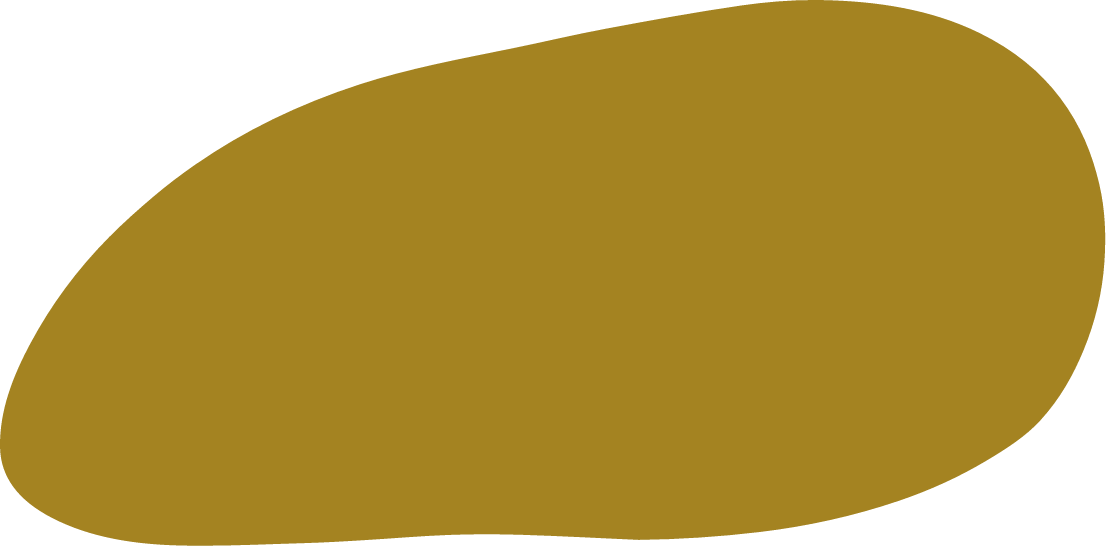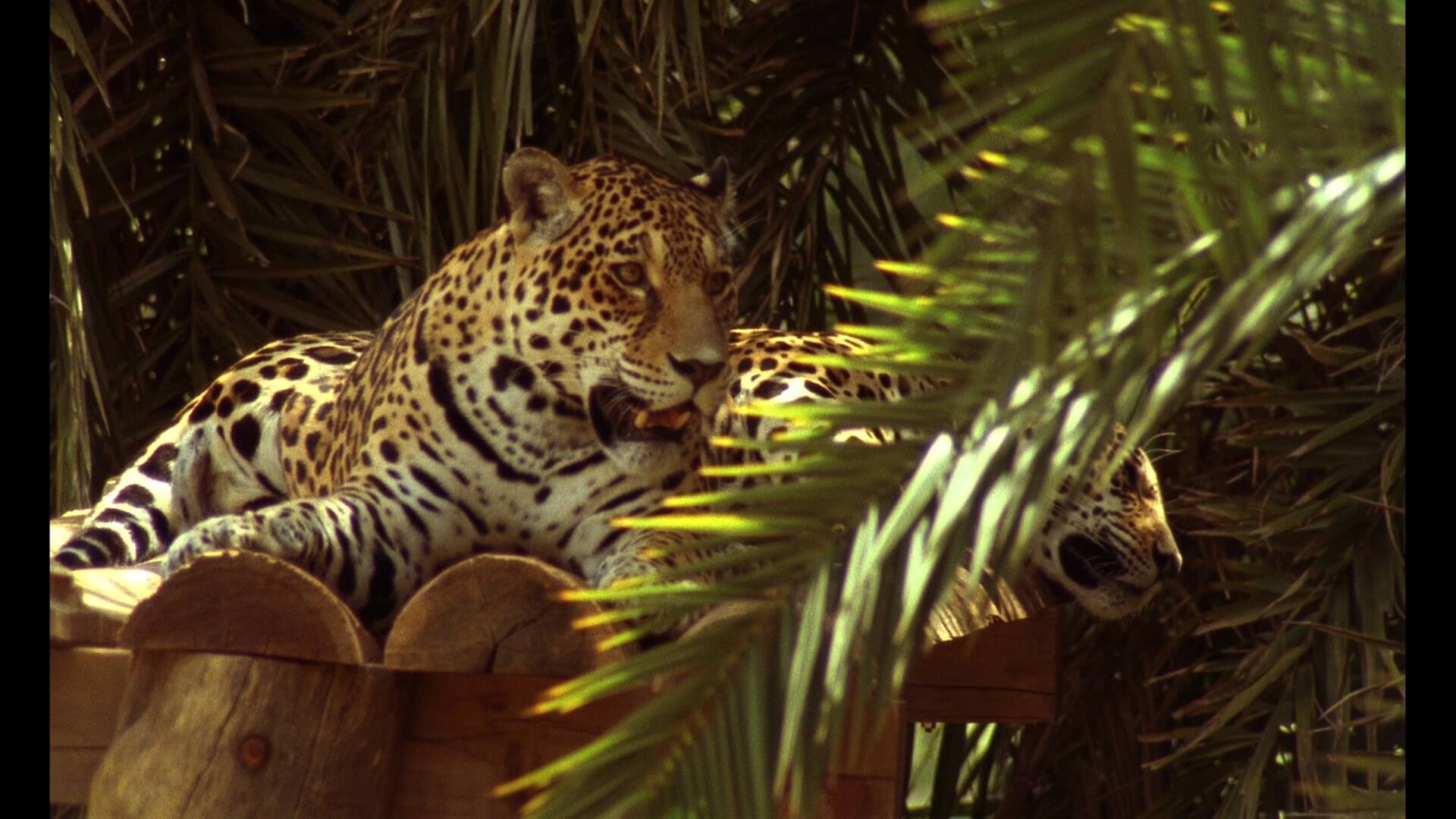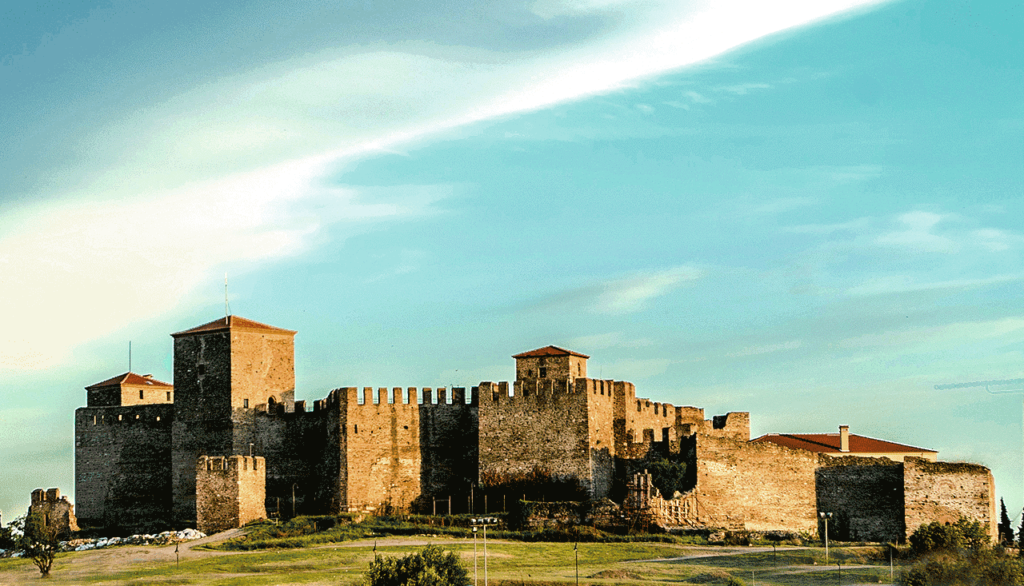Ana Vaz’s two screened works, Há Terra! and Pseudosphynx, function as visual brackets of Being as Communion, positioned at two opposite ends of the exhibition walk.
In Há Terra! a voice calls out “there is land!” Yet, whose land? How much land? Is there any land left? Could there be more of it? While we consider the history of conquests and our insatiable appetite for property, a camera zooms in and out, scanning a fleeting, endless expanse of green. Yet, there is more that escapes our perception, as Ana Vaz’s films fracture the possibility of an all-seeing observer of any landscape (the panopticon), as she rethinks filmic frames.
Há Terra! speaks of the materiality of a place, its haphazard textures, its people “not as representations but as manifestations”, in the artist’s words. And yet, something always escapes us. Time slips through, like a multi-dimensional occurrence, as a suggestion of an inescapable historical loop. And yet, the camera―seen or unseen, looked at or through―creates a circular relationship, as if searching around, not frontally, but proposing a ‘reciprocal anthropology’ beyond the oppositional hierarchy of the gaze.
And then, we watch over the modern architecture of imprisonment, with its consequent domestication of animals, humans, environments, and the fleeting possibility of escape. We watch them run. Or are they chased?
We are all damaged goods: Ana Vaz in Há Terra! uses expired film stock, creating a sort of alchemy, with burnt edges, bright sparks, and hallucinatory, vertiginous collapses from image to colour and back again. Working with film as a materiality, with people and places in constant alertness, filming as a form of diary keeping, accident, or even situated events: we watch them run. We are running with them through the land. Whose land, though?
Pseudosphynx, by contrast, is a meditation on the present tense, in order to be able, in the future, to look back, to forget not. The image of the fire caterpillars devouring all the leaves of the Jasmin-Mango originally appeared to Vaz―“out of sheer biologic ignorance”―the image of death, the plague, the end”.
Vaz finally learned that the action of the fire caterpillars was more an “expression of a form of mutualism than a deadly feast. A kind of chronotopia between the time to devour and the time to be reborn.” According to an online search: “The species (Pseudosphynx tetrio) is known to damage and defoliate Plumerias (Jasmin-mango). Each caterpillar can consume up to three large leaves per day, and if the foliage is not available it can continue feeding by attacking the stem. Even if it defoliates the entire plant, the species usually does not cause its death.” And further, “the caterpillars feed on plants, and in the process detoxify the poisonous latex present in most Apocynaceae. Every year, around the same time and in the same plant, you can observe the beautiful and mighty (unpalatable for birds) colorful caterpillars of this moth”. Pseudosphynx tetrio is the scientific name of the fire caterpillars that will soon become moths, or as we vulgarly (and happily) call them: the witches.
Witch-moths are associated with several legends. According to one of which, during the Inquisition era, in the Middle Ages, it was believed that “witches were transformed into moths, in a kind of transforming of living beings―real or imagined” and therefore real. “During these rituals, witches would gather, for diabolic Sabbaths, in the form of cats, moths and other animals, varying in relationship to each region”. Another legend says that “Ascalapha odorata is dreaded throughout the Americas, as her presence has been associated with death long before the invasion led by Columbus”. Meanwhile, “for the Guarijo peoples in present-day Colombia, the white moth symbolizes the spirit of an ancestor coming to visit the terrestrial world, so when found in a house it should not be killed”.













